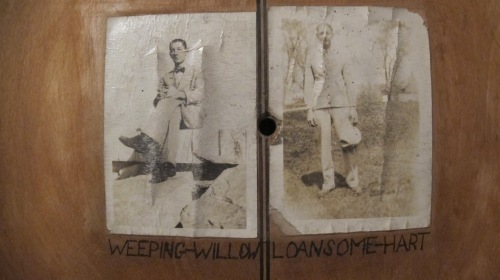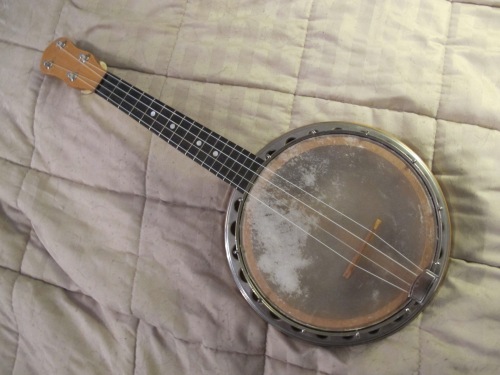
The remains of Oscar Danielson’s irrigation pipes lead to his fields and ditches from the site of the Danielson dam.
In a previous post I published a photograph of swimmers perched on the top rail of the irrigation dam Oscar Danielson built to draw water out of the community canal. This canal redirected some of the flow from Crab Creek towards a number of farms or orchards west of the watercourse. Around 1920 Oscar purchased surplus wire-wrapped wooden water pipes from the city of Seattle to tap into the canal, pumping water from the reservoir behind his wooden dam. His single-stroke gas engine is still hidden in the weeds near the ranch he later occupied on the banks of Lower Crab Creek.

Oscar Danielson mows hay in a field watered by the pipes leading from the Danielson dam. The photograph is probably from the latter half of the 1920s.
The swimmers were part of a larger crowd gathered at the dam for a Fourth of July celebration. It was a custom amongst the farmers and ranchers Continue reading









